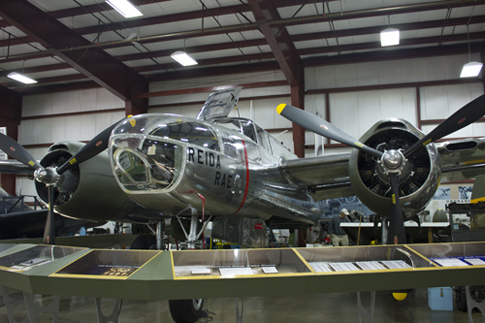

Following an exhaustive nine-year restoration, the combat-veteran Douglas A-26C Invader 43-22499 “Reida Rae” was unveiled to much fanfare at the New England Air Museum in Windsor Locks, Connecticut, beautifully polished and sporting her vanishingly-rare early-style upward hinged canopy.
First test flown in 1942, the Douglas A-26 Invader exceeded every stipulated design specification. With its twin 2000hp Pratt & Whitney R-2800 Double Wasp engines, the “Invader” was faster, had better performance and could carry more of a bomb load that either of the two primary medium bombers at the time, the North American B-25 Mitchell and the Martin B-26 Marauder.
The machine flew operations with the 416th Bombardment Group, 9th Air Force in Europe from December 1944 to August 1945, and will now form part of an official memorial to the 416th at the museum.
On the morning of March 18, 1945, the A-26C Invader was one of 41 Invaders from the 416th that flew from Laon in Northern France to attack German targets in the City of Worms in Southwestern Germany, a major transportation and communications center located on the banks of the river Rhine. The mission became known as “Black Sunday” with four aircraft shot down by antiaircraft fire and 23 more suffering moderate to heavy damage. Among the losses that day was an A-26B flown by Lt James Kenney, hit in the port engine by flak and disintegrating in flames. Gunner/engineer Staff Sergeant Jack Sittarich managed to bail-out of the doomed machine and spent the rest of the war in captivity in a German POW camp. Sittarich was one of 12 veterans from the 416th to attend the unveiling.



Great news. This was the first A-26 I ever saw in person. Glad to see it finished.
Great plane, I saw an A-26 few years back flying in Montana during a fire bombing mission. Added a picture for you.
This is my grandfather’s plane.
I was a Bombardier/Navigator on an A-26 C in WWII.